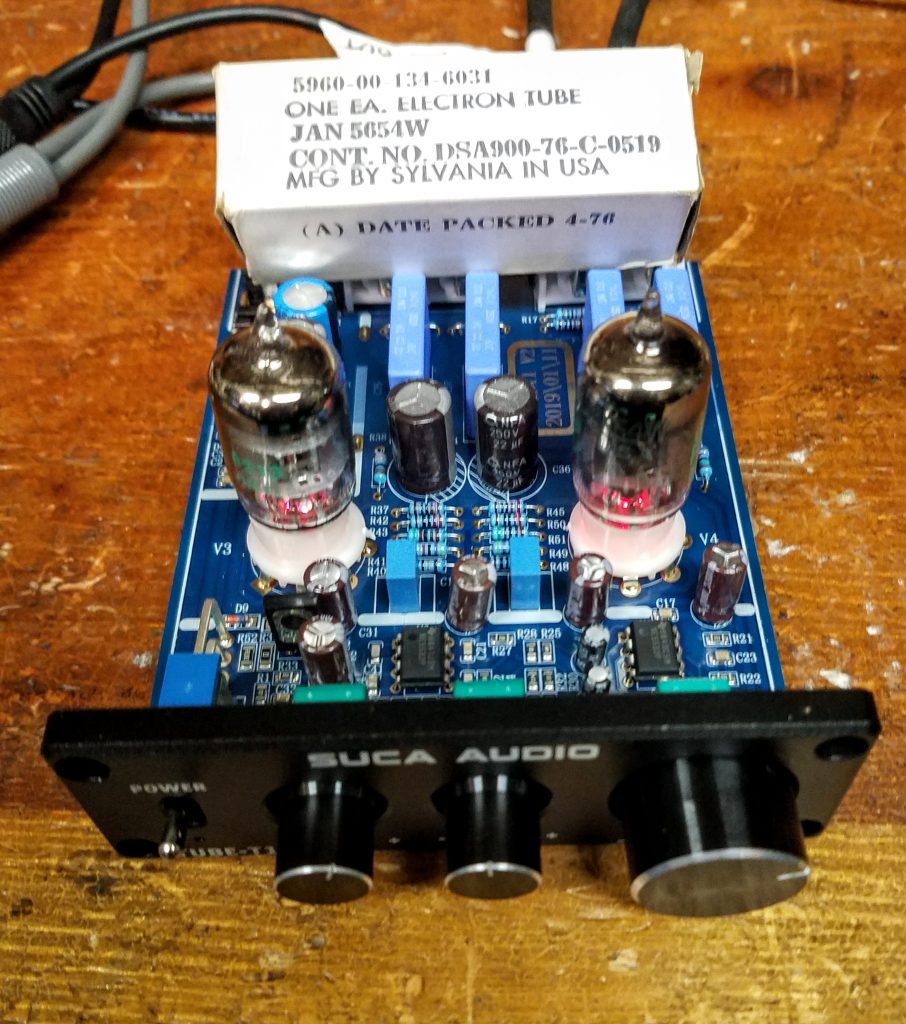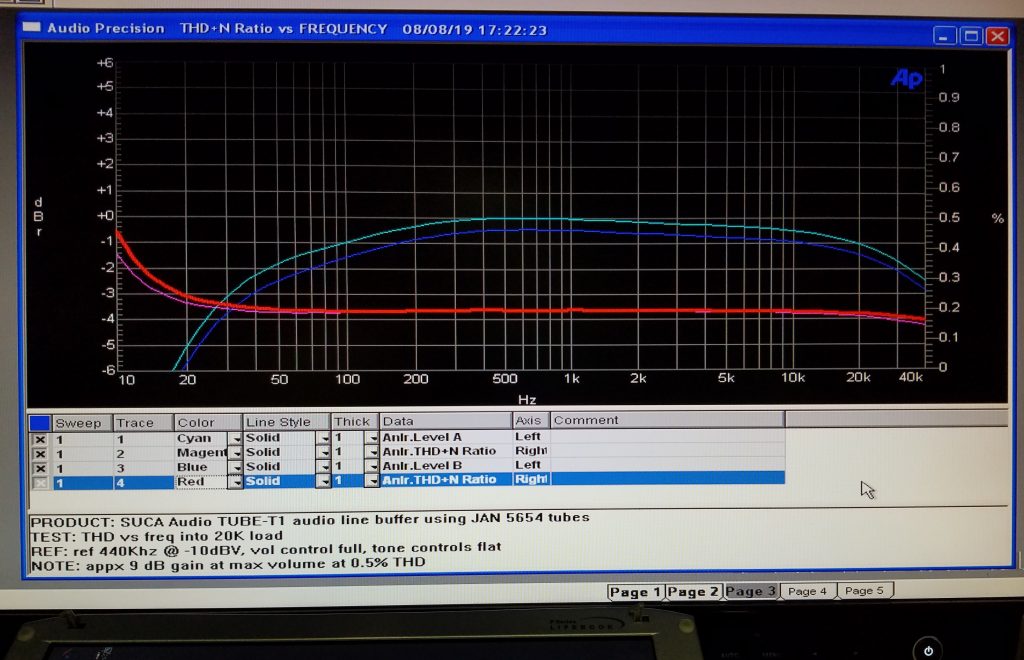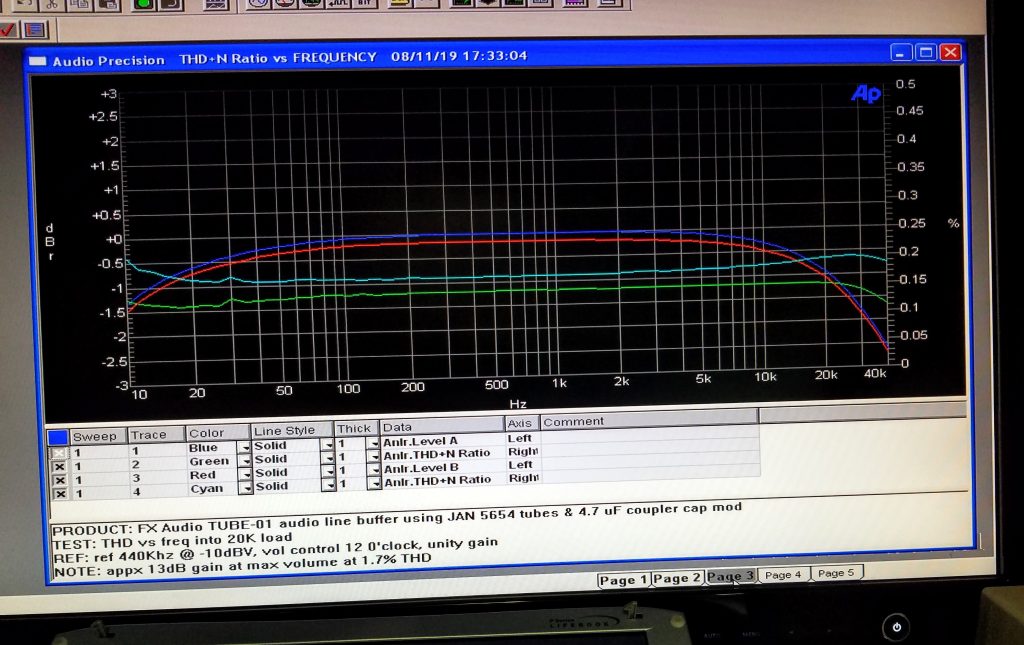Or, what’s going on with these tube audio box thingies?
Incept date: 2019.07.15
I’m an audio and electronics engineer, and I’ve been rebuilding vintage tube equipment for decades. I have lab grade equipment to measure electrical performance with and I have studio quality monitors to listen with.
In this study I will evaluate the measured performance characteristics of these units as well as how they sound to my audiophile ears.
A common problem I run into is in needing a volume control with a bit of gain. This is especially useful for portable music players and phones that have rather wimpy output levels. A whole bunch of these cute little tube buffer units have hit the market recently, and I thought it would be interesting to see if they would solve this issue.
tl;dr…
The initial measurements on these don’t impress me. However, a tube swap greatly improves things, moving these units from a “hmmm” to a “good value for the money” buy.
1 – I highly recommend replacing the supplied tubes with NOS JAN 5654W tubes. The 5654W in this application has more gain, less THD, and better overload characteristics than the supplied tubes, despite of being some 40 years old.
2 – A normal 20K output load (e.g. your SS amplifier or powered speaker input) is difficult for these units to drive, in that it wreaks havoc with THD and freq response. It appears the claimed measurements are a rather optimistic “best case” rather than “typical”.
3 – Deep bass will benefit significantly from larger output coupling capacitors, especially when driving a “real world” solid state 20K load. I tried 4.7 uF which sounds and measures much better.
Let’s Begin
I selected the similar looking SUCA-AUDIO “Tube-T1” with 6K4 tubes and bass/treble controls, and the FX-Audio “TUBE-01” with 6J1 tubes.
There are available for under $40 USD, including the tubes and the “wall wart” universal power supply.
They both are housed in nice looking flat metal boxes in the usual decorator approved black color scheme. They have unbalanced RCA/Cinch consumer style jacks on the back, controls on the front.
There’s a red LED under the socket to “light up” the tubes, which strike me as a bit twee, but it doesn’t appear to harm anything either. (shrug).
The tubes used are a readily available wide band pentode. Currently, 6J1, 6K4, 6AK5, and the mil spec JAN 5654W are all listed as equivalents.
Once opened and examined, the two PCB’s looked to be quite different, in both the audio path and the step up power supply implementation, so I’ll discuss and evaluate them separately. Note: My comments and interpretations will be in italics.
SUCA AUDIO “TUBE-T1”
The TUBE-T1 unit run the tube buffers at a nominal 70V B+. The tone controls appear to be the typical op-amp design, offering both boost and cut.
The unit offers about 6 dB of overall gain at max volume, albeit at a whopping 2.1% THD into a typical 20K load. This tells us the output stage is the less desirable high impedance design (output taken off the tubes anode) and it will be affected by the the next devices input impedance quite a bit. Signal level, low end frequency response, and THD are all likely to be worse into a real world load than an open load with this design.
FIRST QUICK TEST RESULTS
The quick look at unity gain looks like this graph. … and I will now do an interpretive dance to explain this chart. 🙂
First, these are quick cell phone photos of the screen, please excuse the crooked aspect. (The AP chart export isn’t working correctly.)
Moving along…

THD:
THD (red/magenta lines) is over 1% in the critical midrange area, and over 0.8% in general, rather dismal values for quality audio equipment. And it shoots up to 2.1% THD when the 6dB of gain is added (max volume).
Frequency response:
The high end is slightly down (1 dB at 20KHz), not generally audible.
The low end is another matter, it starts rolling off at 200Hz and is down about 5dB at 20Hz. If you listen to club, trance, symphonic or other bass heavy music with a good sub-woofer, you may notice this loss. If you’re listening thru small desktop speakers, you’ll likely not notice.
IOW, the stock measured performance isn’t very good.
Tube swap
Based on numerous reports that the stock tubes didn’t sound very good, I ordered up a handful of NOS 5654’s to play with. Although the “Riverstone Audio – Tested/Matched Pair” tubes were the favored and highly regarded internet mob choice, I balked at paying as much for the two tubes as I did for the whole unit!
Instead, I bought 8 NOS JAN 5654W’s from the good folks at AES and a pair from the good folks at thetubestore to swap into the units.

Viola, much much better!

THD (red magenta lines) is now under 0.2% except at the lowest frequencies. The frequency response looks about the same, but the max gain went up to 9dB at a more reasonable 0.5% THD.
These are either better tubes or a better match for the circuit, so I’d say the JAN 5654W tubes are a worthwhile change in this unit.
FX Audio “TUBE-01”
In the TUBE-01 , the tube buffers are run at a low 25 Volt B+. This is an unusually low operational voltage (the tubes are spec’d at 120 Volts). As electronics tend to behave very differently on low voltages, this may explain why tube swaps are claimed to have such a large effect on the sound in these units.
The input goes directly to the volume control, which presents a 50K input load to the input. This is high enough to not be an issue.
No input cap, so DC on the input may cause scratchiness from the volume control.
From there, the circuit adds 12 dB of gain with no load, and about 10 dB with the usual 10K-20k load the following amp would present. This tells us the output stage is a less desirable high impedance design (probably off the tubes anode) and it will be affected by the the next device quite a bit. Signal level, low frequency response, and THD are likely to be worse.
First quick test results
Like the other unit, this one has a rather high amount of distortion (about 0.4% THD). It rolls off the high end a bit and the low ends a lot, even into an unrealistically easy 100K load. This is very similar to the other unit.
Rather than do a full suite of measurements that merely illustrate how poorly this one measures, I immediately replaced the tubes and upgraded the smallish 1.0 uF output coupling cap to 4.7 uF parts.
Here’s what these two simple changes did. [author note: better photo!]

This is a big improvement. THD about halved and the low frequency rolloff is less than 1 dB at 20Hz. These mods are quite worthwhile.
Author notes to self, remember to touch on:
- Output topology and impedance loading – 100K vs 20K vs 10K?
- Measurements -10 and -20dBV – (in process)
- Does THD decrease over time. (ie long warmup?)
- Check spectrum of THD (mostly “musical” 2nd?).
- Tube swapping results – (NOS 5654W is better than the supplied tubes, done)
- Rolled off bass response – output coupling capacitor too small? – (yes, 4.7uF looks about right for the TUBE-01).
Last Updated on 2020-11-15 by Daev Roehr
